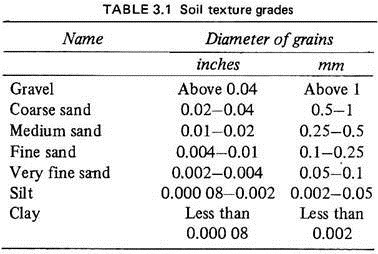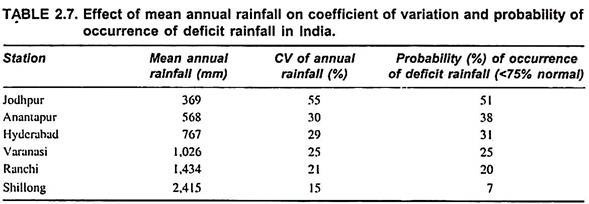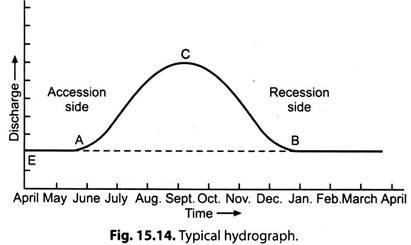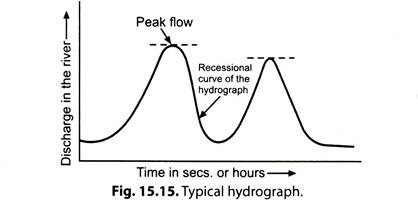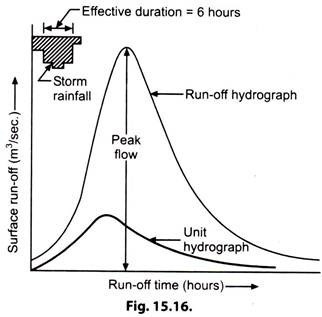ADVERTISEMENTS:
Here is a compilation of essays on the ‘Earth’ for class 6, 7, 8, 9, 10, 11 and 12. Find paragraphs, long and short essays on the ‘Earth’ especially written for school and college students.
Essay on the Earth
Essay Contents:
ADVERTISEMENTS:
- Essay on the Origin of Earth
- Essay on the Age of the Earth
- Essay on the Structure of the Earth’s Interior
- Essay on the Earth Rotation and Revolution
- Essay on the Axis Tilt and Solar Altitude
- Essay on the Energy of Earth-Heat Flux
- Essay on the Geothermal Gradients in the Earth
Essay # 1. Origin of the Earth:
Earth is the third planet in the Solar system and lies at an average distance of approximately 149 billion km from the Sun. The Earth is presumed to be as old as five or six billion years. The Earth was initially a fiery spinning ball of hot gases and vapours. Gradually, through millions of years, the gases condensed into a molten core and the different elements got stratified according to their density.
The heavy elements like iron and nickel sank to the centre and formed the core of the Earth, while the lighter elements such as silicon and aluminium formed the middle shell, while the lightest elements like helium, hydrogen, oxygen, nitrogen and carbon settled at the surface and formed the gaseous atmosphere. This atmosphere was very different from what it is today.
The temperature of the Earth was estimated to be about 5000 – 6000°C. At such high temperatures, elements like hydrogen, oxygen, carbon and nitrogen could not exist in Free State. These combined among themselves or with metals forming oxides, carbides and nitrides.
ADVERTISEMENTS:
These compounds existed in gaseous state. Water was also present as super-heated steam. Such an atmosphere composed of ammonia, methane, steam, cyanides, carbon dioxide, free hydrogen and without free oxygen is described as a reducing type of atmosphere.
As cooling occurred gradually, the gases liquified and some of the liquids turned into solids. Steam condensed into water and resulted in rain that evaporated on approaching the heated surface.
This continued for millions of years and resulted in the cooling of the Earth’s surface. Water bodies came into existence. They contained dissolved ammonia and methane. There occurred dissolution of mineral rocks leading to the accumulation of minerals and salts in the oceanic water.
ADVERTISEMENTS:
Essay # 2. Age of the Earth:
ADVERTISEMENTS:
Scientists have estimated the age of the Earth by measuring the amount of decay of certain radioactive isotopes that has taken place in rocks. For example, radioactive potassium, 40K decays into argon (40A) and calcium (40Ca).
About 90 percent of 40K decays to 40A and ten percent to 40Ca. It is safe to assume that argon would not have been present when the rocks formed because this element occurs as a gas and would have been excluded from rocks. Any argon now present in rocks must therefore have derived from the decay of 40K after their formation.
The half-life of 40K is 1.26 × 109 years. Knowing this, one can compute the age of the particular rock by measuring how much of the 40K has decayed to 40A, that is, by measuring the ratio of 40A to 40K.
In addition to the potassium-argon method of dating, the age of rocks can be estimated from the ratio of rubidium to strontium or by the uranium-thorium-lead method. The three dating methods all give about the same age for the oldest rocks, 4.6 × 109 years. This is generally accepted as the age of the Earth. Formation of the Earth is believed to have occurred by aggregation of particles ranging in size from dust to asteroids over a period of millions of years.
The process still continues with the capture from space of dust and meteors by the Earth’s gravity. Contrary to earlier views, it is now generally believed that the surface of Earth was not molten when the Earth was formed, which means that the surface temperature remained below 900°C. This is important because it means that simple organic materials, which are known to be present outside the Earth, might have been included during formation of the Earth and survived to become a part of the primitive Earth.
Essay # 3. Structure of the Earth’s Interior:
In this article we will discuss about the structure of the earth’s interior, explained with the help of a suitable diagram.
Crust:
ADVERTISEMENTS:
It is the uppermost shell of earth that extends to variable depths below mountains, continents and oceans. The thickness of crust is believed to be 0.90 km and several substances like limestone, coal, gold, petroleum etc. are found in the crust.
Mantle:
It is the second concentric shell of earth that lies below the crust. The upper rigid part of the mantle extends up to 100 km below the separating crust and contains mainly iron and magnesium. The crust and upper mantle form the ‘lithosphere’.
The lower mantle extending up to 2900 km below the earth’s surface is less rigid and is hotter. This is known as ‘asthenosphere’ and is capable of being deformed. The movement of lithosphere over the asthenosphere results in the ‘phenomenon of plate tectonics’ i.e. movement of the earth’s crust.
Core:
It is the innermost concentric shell of the earth. The core boundary begins at a depth of 2900 km from the surface and extends to the centre of the earth at 6370 km. This layer is further subdivided into outer core and inner core.
The outer core comprises the region from a depth of 2900 km to 5200 km below the earth’s surface and behaves mere like a liquid. The inner core with a thickness of around 1170 km is believed to be a solid metallic body, containing nickel-iron alloy.
The hot molten rock of the mantle is called Magma.
Essay # 4. Earth Rotation and Revolution:
The term ‘Earth rotation’ refers to the spinning of the Earth on its axis. One rotation takes exactly twenty-four hours and is called a mean solar day. If you could look down at the Earth’s North Pole from space you would notice that the direction of rotation is counterclockwise. The opposite is true if you viewed the Earth from the South Pole.
The orbit of the Earth around the Sun is called Earth revolution. This celestial motion takes 365 1/4 days to complete one cycle. Further, the Earth’s orbit around the Sun is not circular, but elliptical. An elliptical orbit causes the Earth’s distance from the Sun to vary annually. However, this phenomenon does not cause the seasons!
This annual variation in the distance from the Sun does influence the amount of solar radiation intercepted by the Earth by approximately 6%. On January 3rd, perihelion, the Earth is closest to the Sun (147.5 million kilometers). The Earth is farthest from the Sun on July 4th, or aphelion. The average distance of the Earth from the Sun over a one year period is 150 million kilometers.
The Earth’s axis is not perpendicular to the plane of the ecliptic, but inclined at a fixed angle of 23.5°. Moreover, the northern end of the Earth’s axis always points to the same place in space (North Star). Figure 3.2 shows an animation of the Earth revolving around the Sun. In this animation the Earth’s axis is coloured red. Note that the angle of the Earth’s axis in relation to the plane of the ecliptic remains unchanged.
However, the relative position of the Earth’s axis to the Sun does change during this cycle. This circumstance is responsible for the annual changes in the height of the Sun above the horizon. It also causes the seasons, by controlling the intensity and duration of sunlight received by locations on the Earth.
The Earth from a position in space is above the North Pole at the summer solstice, the winter solstice, and the two equinoxes. Note how the position of the North Pole on the Earth’s surface does not change. However, its position relative to the Sun does change and this shift is responsible for the seasons. The red circle on each of the Earths represents the Arctic Circle (66.5° N).
During the summer solstice, the area above the Arctic Circle is experiencing 24 hours of daylight because the North Pole is tilted 23.5° toward the Sun. The Arctic Circle experiences 24 hours of night when the North Pole is tilted 23.5° away from the Sun in the winter solstice. During the two equinoxes, the circle of illumination cuts through the polar axis and all locations on the Earth experience 12 hours of day and night.
On June 21 or 22, the summer solstice, the Earth is positioned in its orbit so that the North Pole is leaning 23.5° toward the Sun. During the summer solstice, all locations north of the equator have day lengths greater than twelve hours, while all locations south of the equator have day lengths less than twelve hours.
On December 21 or 22, the winter solstice, the Earth is positioned so that the South Pole is leaning 23.5° toward the Sun. During the winter solstice, all locations north of the equator have day lengths less than twelve hours, while all locations south of the equator have day lengths greater than twelve hours.
On September 22 or 23, the autumnal equinox, neither pole is tilted towards the Sun. March 20 or 21 marks the arrival of the spring or vernal equinox when once again the poles are not tilted towards the Sun. Day lengths on both of these days, regardless of latitude, are exactly 12 hours.
Essay # 5. Axis Tilt and Solar Altitude:
The annual change in the relative position of the Earth’s axis in relationship to the Sun causes the height of the Sun (solar altitude) to vary in our skies. The total variation in maximum solar altitude for any location on the Earth over a one year period is 47° (2 x 23.5 = 47). For example, at 50° north, maximum solar altitude varies from 63.5° on the summer solstice to 16.5° on the winter solstice.
Maximum solar height at the equator goes from 66.5° above the northern end of the horizon during the summer solstice, to directly overhead on the fall equinox, and then down to 66.5° above the southern end of the horizon during the summer solstice.
The location on the Earth where the Sun is directly overhead at solar noon is known as the sub-solar point. The sub-solar point occurs on the equator during the equinoxes. During the summer solstice, the sub-solar point moves to the Tropic of Cancer because at this time the North Pole is tilted 23.5° toward the Sun. The sub-solar point is located at the Tropic of Capricorn on the winter solstice. On this date, the South Pole is now tilted toward the Sun.
Figure 3.7 shows the relationship of maximum Sun height to the latitude for the equinox (left) and summer solstice (right). The red values on the right of the globes are maximum solar altitudes at solar noon. Black numbers on the left indicate the location of the equator, Tropic of Cancer (23.5°N), Tropic of Capricorn (23.5°S), Arctic Circle (66.5°N), and the Antarctic Circle (66.5°S). The location of the North and South Poles are also identified. During the equinox, the equator is the location on the Earth with a Sun angle of 90° for solar noon. Note how maximum Sun height declines with latitude as you move away from the equator.
For each degree of latitude traveled, maximum Sun height decreases by the same amount. At equinox, you can also calculate the noon angle by subtracting the location’s latitude from 90. During the summer solstice, the Sun is now directly overhead at the Tropic of Cancer. All locations above this location have maximum Sun heights that are 23.5° higher from the equinox situation.
Places above the Arctic Circle are in 24 hours of daylight. Below the Tropic of Cancer the noon angle of the Sun drops one degree in height for each degree of latitude traveled. At the Antarctic Circle, maximum Sun height becomes 0° and locations south of this point on the Earth are in 24 hours of darkness.
The following table describes the changes in solar altitude at solar noon for the two solstices and equinoxes. All measurements are in degrees (horizon has 180 degrees from True North to True South) and are measured from either True North or True South (whatever is closer).
Finally, the altitude of the Sun at solar noon can also be calculated with the following simple equation:
Altitude A = 90 – Latitude L +/- Declination D
In this equation, L is the latitude of the location in degrees and D is the declination. The equation is simplified to A = 90 – L if Sun angle determinations are being made for either equinox date. If the Sun angle determination is for a solstice date, declination (D) is added to latitude (L) if the location is experiencing summer (northern latitudes = summer solstice; southern latitudes = winter solstice) and subtracted from latitude (L) if the location is experiencing winter (northern latitudes = winter solstice; southern latitudes = summer solstice).
All answers from this equation are given relative to True North for southern latitudes and True South for northern latitudes. For our purposes only the declinations of the two solstices and two equinoxes are important.
These values are – Summer Solstice D = 23.5, Winter Solstice D = 23.5, Autumnal Equinox D = 0, and Vernal Equinox D = 0. When using the above equation in tropical latitudes, Sun altitude values greater than 90° may occur for some calculations. When this occurs, the noonday Sun is actually behind you when looking towards the equator.
Under these circumstances, Sun altitude should be recalculated as follows:
Altitude A = 90 – (originally calculated Altitude A – 90)
Essay # 6. Energy of Earth-Heat Flux:
Earth is in a state of thermal equilibrium. The energy received from sun is lost at night. The small amount of energy generated by the decay of unstable isotopes of uranium, thorium etc. is dissipated from earth’s interior to oceans and atmosphere.
The heat generated within earth is around 2700 GW:
i. The heat energy in earth’s interior is due to radioactivity. Regions of higher radioactivity have higher heat flux and are potential geothermal sites.
ii. Earth’s surface consists of about one dozen tectonic plates (e.g., American plate, Arabian plate, Indian plate, Philippine plate, Pacific plate etc.). Each of these plates has thickness around 100 km and thousands of kilometres area. Earth’s interior is unable to lose heat, by conduction, as rapidly as it is generated by ‘radioactivity’. This leads to “convective instabilities” which means that these plates are continuously in motion with respect to each other.
A variety of processes along the margins of the plates lead to partial melting at depths between 15 and 200 km. The molten masses penetrate the surrounding rocks and rise towards earth at rates varying from a few cms per day to a few cms per year, thus resulting in volcanic activity. The molten masses which do not reach earth’s surface come to rest in the middle or upper part of earth’s crust at depths less than 20 km. These liquid magmas may have temperatures around 1000°C.
The crystallisation of these liquid magmas produces intrusive igneous bodies. The cooling and crystallisation of igneous bodies give rise to local heat flux. This heat flux constitutes the geothermal energy which may be used for a variety of purposes including generation of electricity.
The local heat fluxes continue for thousands of years and form an ‘inexhaustible source of energy’.
iii. The majority of active geothermal areas tend to concentrate around the margins of major lithospheric plates.
Essay # 7. Geothermal Gradients in the Earth:
The temperature difference within the earth depends on:
1. The thermal properties of earth’s interior and their radial and lateral variation.
2. Movement of fluids or solid rock materials occurring at rates of more than a few millimetres per year.
A potential geothermal source region should have high thermal gradient. Thermal gradient is defined as the ratio of heat flux and thermal conductivity.
Fig. 7.3 shows the Geothermal gradients. The figures are based on measurements within a few km of earth’s surface.
Curve 1: It represents average uniform gradient.
Curve 2: It represents theoretical increase in the boiling point of water at increasing depths due to higher pressures, allowing for reduced density due to higher temperatures.
Curve 3: It represents thermal gradients of such regions in which water percolates through upper crust into lower hot region and hot water flows vigorously upwards forming ‘hot springs’.
Curve 4: It represents the effect of solid impermeable rock. The rock forms insulating cap on geothermal reserves and does not allow heat flow to upper part.
Curve 5: It represents leaks in the solid impermeable rocks in the form of springs of hot boiling water discharged in large quantities to ground surface. In some locations production of steam occurs at lower depths and the steam is released to the surface in the form of fumaroles and geysers as shown in curve 5. Such locations are very few in number.

